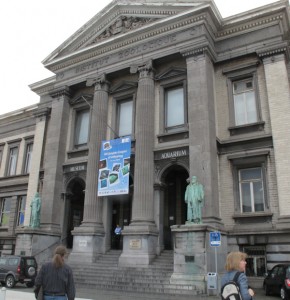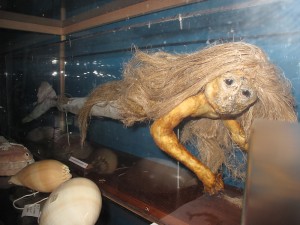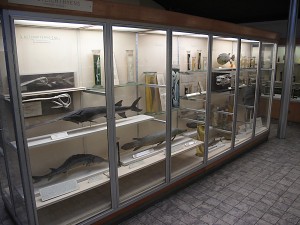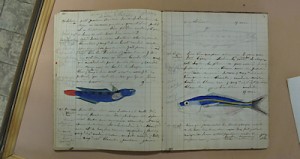This is the first day of silence after coming back to Stockholm from the XIV European Ichthyological Congress in Liège, Belgium (3-8July).

Entrance to the museum and aquarium in Liège, venue of the XIV European Congress of Ichthyology, July 2012
Whereas the meeting, attended by a round 260 delegates from all over Europe and occasional from farther away, was well organised and quite informative, heat hit us and noise. Coming from a cold Swedish summer, the rainiest June in 200 years, Liègian temperatures were an amiable mid-20s and only one shower wet us. But it took buying a few more T-shirts (from Swedish H&M) to feel comfortably neat around the clock. I loved the heat, actually. But the noise… Constructed as an intricate labyrinth of narrow streets between stone and brick buildings, sounds from everything sounding cascaded through the streets of Liège and there was no escape even in the hotel room. Most remarkable, however, were the frequent ambulances and police cars continuously racing in and out of streets and alleys, with a 2000 db (exaggerating, but well …) high pitch sirens resounding all over the municipality. Quite remarkable. Liègians seem to love noise more than anything else.
Fleeing the street sirens I had a brief encounter with a real one in the lower floor of the combined public aquarium and zoological museum (Liège Aquarium-Museum) , which was also the venue for the Congress. This little lady had a glass cage all for herself, in swimming pose, and is indeed the first real stuffed mermaid I have come close to in real life.
The rest of the aquarium is maybe mainly for the local audience. The Museum, however, two floors up, was neat and had a number of interesting objects, making it well worth a visit. Displaying real animals in systematic order it was ideal and should be a lead star for other natural history exhibits.
One table display featured a charming set of castelnauiana that was news to me, including drawing equipment, notebooks, and sketches from the later days of Francis de Castelnau (1810-1880). Apparently Castelnau donated specimens to the museum along with the notebooks, and there is now a plan to repaint the stuffed fishes based on the drawings.
The Congress? Well, I probably sat more than the usual number of sessions. Belgium has a big advantage in having several institutions providing training and research opportunities in morphology and anatomy, making it an interesting breeding ground for evolutionary and functional analyses of fish physionomies and behaviour, and has also a very strong research in African freshwater fishes. This balanced very well a large number of more or less conclusive or inconclusive molecular presentations. I travelled with NRM FishBase staff Michael Norén and Bodil Kajrup who presented a talk on our ongoing hagfish research, and a poster of a mapping of Swedish fish type localities, respectively. I have been too occupied with other things recently, and did not feel like giving a talk. Some other time. Maybe on mermaids. This is not the last mermaid post. It didn’t turn out a meeting report, at least.
By the way: The European Ichthyological Congresses are organised locally (this one mainly by the University of Liège) but are actually a significant part of activities of the European Ichthyological Society. The first congress was organised in Sarajevo in 1972. I was one of the organisers of the Congress in Stockholm in 1985. Membership in the society is open for all, and there is a website (http://artedi.nrm.se/eis/) providing the details how to join.
All photos © Sven O Kullander, CC-NC-BY


